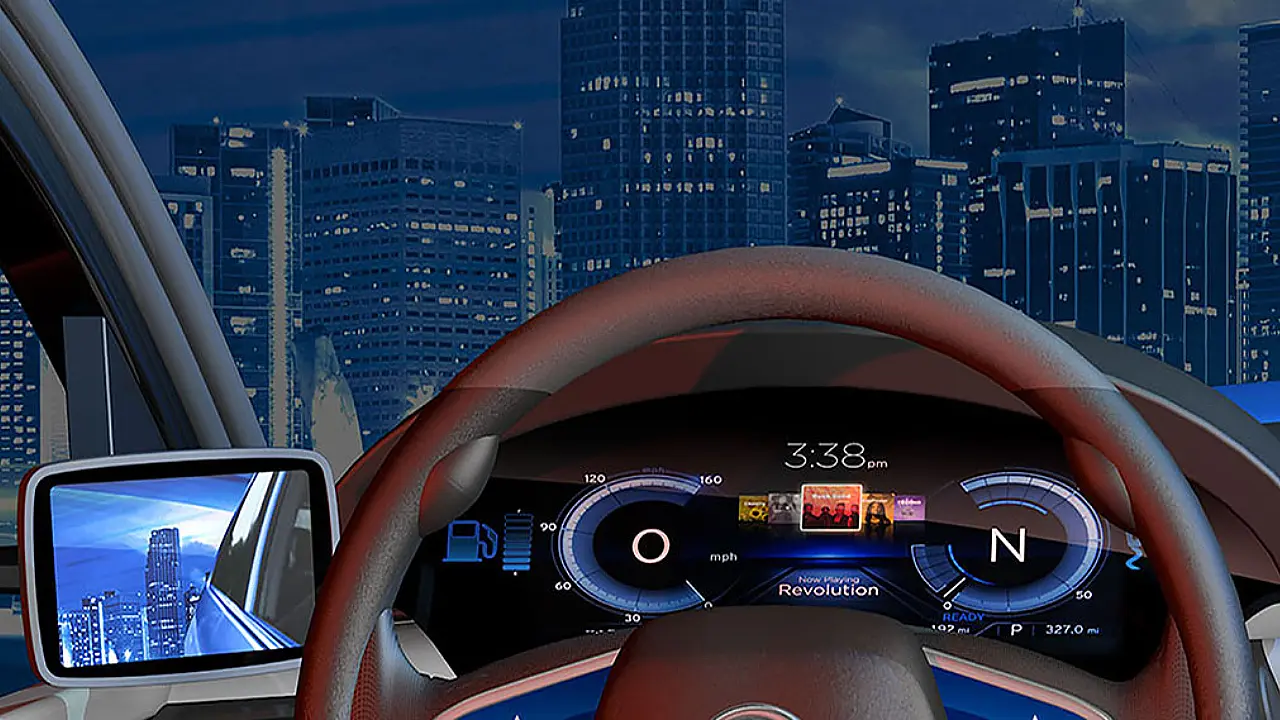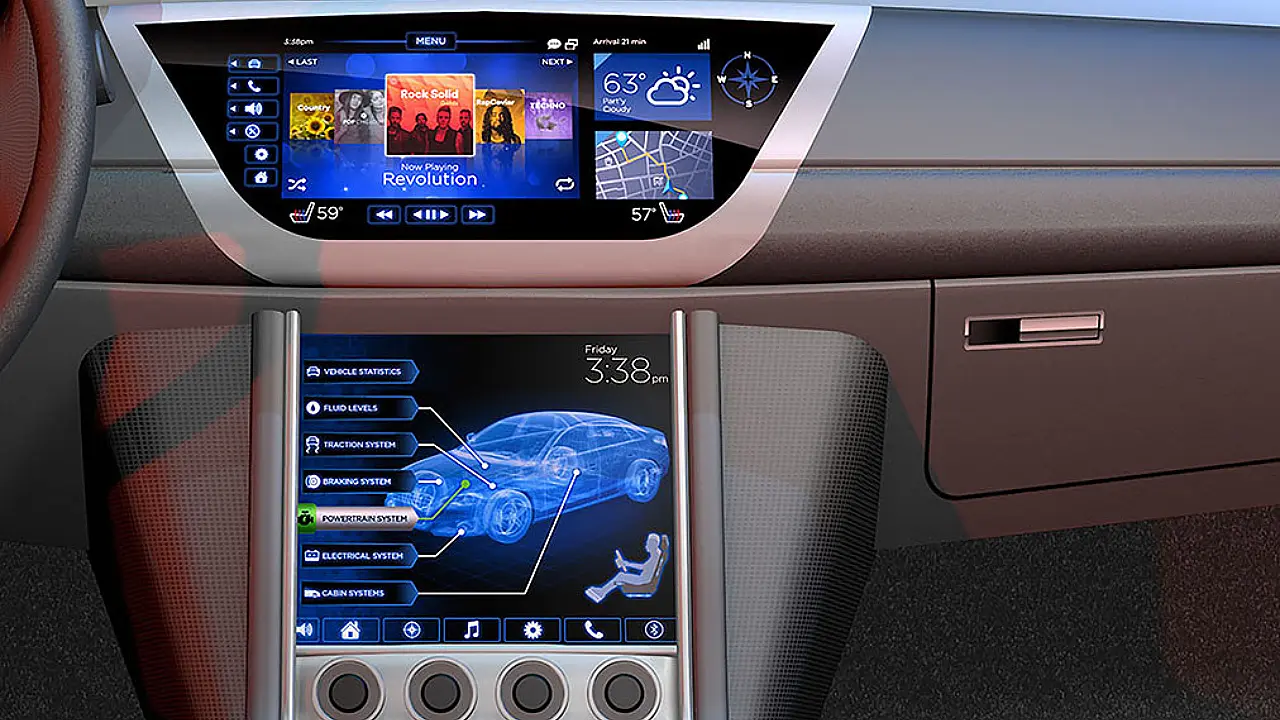
In the last few years, the semiconductor industry has seen immense growth in the automotive sector primarily driven by advancements such as ADAS systems, V2X connectivity solutions, and telematics devices – all against the backdrop of increasing shift to more autonomy in how vehicles operate, and the massive movement to electrification.
The growth of chip sales into the automotive sector is expanding at nearly twice the rate of overall semiconductor industry growth as they become increasingly critical in how OEMs differentiate vehicles. The recent semiconductor supply chain crisis hit the automotive industry particularly hard as a modern vehicle can contain up to 3,000 chips.
Chips are critical, enabling new safety & convenience features, finding new ways to entertain and inform both passengers and operators, and connecting the vehicle to the outside world. These are ways automakers transform the in-cabin experience as a differentiating factor compared to traditional features like horsepower and exterior design.
Infotainment systems in particular have witnessed many changes as per the market demand. The once humble set of analogue gauges and controls is now a highly sophisticated digital feature of modern vehicles, that acts as an in-built car computer combining a wide range of information and entertainment functions.
From music streaming, digital radios to in-built reversing cameras, navigation and climate control, these screens occupy a prominent position in the centre console and are a constant companion for drivers.
Indeed, it’s been called the fourth screen — the last “unconquered” (by advertisers – but that is changing!) screen in our daily lives. With the average driver spending close to an hour a day in their car, how information and entertainment is served up on the road is becoming increasingly important. Factor in trends such as 5G connectivity and the potential of self-driving vehicles, and it’s no wonder the in-car display is getting more attention.
Evolution Of In-Car Infotainment Systems
The evolution of in-car infotainment systems has been marked by a steady increase in both the size of the screens and the functionality they provide, as well as the emergence of screens elsewhere in the vehicle, such as rear seat entertainment or as a replacement to exterior mirrors.
According to Strategy Analytics, the annual number of automotive displays sold will nearly double from 2020 to 2028. And they are getting larger. Research from IHS Markit shows that the number of vehicles built in North America with display screens measuring 7 inches or more has grown by nearly 75% in the past five years, to 10.9 million from 6.3 million. European car makers are on a similar, if not faster, trajectory. IHS says that the average size of the screen also has increased, to 7.3 inches from 6.4 inches, during that period.

But challenges exist: automotive specifications, multiyear design cycles and challenging environmental conditions have traditionally caused automotive displays to lag the consumer display industry in contrast ratio, black levels, resolution, curvature and form factor. OEMs are increasingly focused on differentiating their infotainment human-machine interface displays and catching up to the technological advances now common in smartphones, tablets and television displays.
The challenge in automotive is to deliver the desired performance at acceptable price points, while addressing varying design needs and meeting more stringent standards than consumer devices.
The Evolved Infotainment System
Despite the challenges, in a trend that is helping provide users a more mobile-phone like experience, display technology in vehicles has forged ahead in recent years, and the latest infotainment systems are taking full advantage of these advancements.
Today’s infotainment displays come in a range of sizes and configurations, and they are loaded with features that may vary from one model to another. Some key elements of a standard system are its touchscreen, voice-activated controls, and integration with smartphones and other mobile devices.
Display performance and reliability is a key area, with bright and clear resolution in all lighting conditions a priority requirement, while still meeting demanding automotive safety and reliability specifications that are far more rigorous than consumer electronics.
Unlike those in consumer applications, automotive displays must deal with many more environmental circumstances – such as varying ambient light conditions (very bright sunlight or night time), prolonged extreme hot and cold temperatures, EMI and vehicle vibration. Technical advances in consumer displays haven’t needed to address this to the same degree.
Other uniquely automotive industry needs in the area of cost and supply chain are important considerations too, and chip suppliers are responding. For example, Synaptics has pioneered an approach called TDDI that integrates both touch and display technologies in a single chip – saving space, cost and power – all while improving the overall user experience.
Similarly, local dimming is an approach developed to improve LCD optical performance. It dims parts of the screen that should be dark and keeps bright those parts of the screen that should be bright. This results in improved contrast ratios and an easier-to-read display in varying conditions.
Chip-led Innovations
Reliability is key in a safety critical application like a car, so chip makers like Synaptics are focused on that as well. For example, displays must be able to detect when there is a pixel failure anywhere and address it immediately so as not to cause an interruption in providing the operator important information.
Another area of innovation through semiconductors in is vision sensing. In addition to exterior monitoring system for collision avoidance and driver assistance features (e.g. parking, reversing, lane detection), in cabin sensors can help monitor if the driver is either drowsy or distracted, hence preventing accidents.
Driver monitoring systems (DMS) are becoming increasingly adopted in new vehicle models. The market was valued at $1 billion in 2002, and is projected to grow at a CAGR of 10% over the next ten years.
Meanwhile, in-cabin connectivity seamlessly harmonises smartphones and other devices with the infotainment system, seamlessly integrating functionalities like hands-free calling and media streaming. These screens allow for more intuitive and user-friendly interfaces and provide a less distracting experience for drivers and more immersive experiences for passengers.

In addition to larger screens, the latest infotainment systems are also integrating with other smart devices and cloud-based services. Wireless content distribution emboldens the realm of personalisation, empowering users to share captivating content wirelessly across multiple screens within a single vehicle or even between vehicles.
While infotainment displays provide drivers with a range of useful features, there are also concerns about their impact on safety. Research has shown that even minor distractions can significantly increase the risk of accidents, and infotainment screens are among the most common sources of distraction in modern cars.
To mitigate these risks, manufacturers are implementing a range of strategies, including voice-activated controls, gesture recognition, heads-up displays, and ‘shy tech’ that displays information only when needed or requested by the operator. These technologies allow drivers to interact with their infotainment systems without taking their eyes off the road and can significantly reduce the risk of accidents.
Semiconductor Innovation Is Key
The unsung heroes behind these ground-breaking advancements are semiconductors whose vital role in fuelling innovation and powering the automotive industry cannot be overstated.
With increasingly advanced displays, more safety and driver assistance features, in-cabin connectivity, and wireless content distribution converge, a vibrant future for in-cabin infotainment takes shape, promising not just enhanced safety and convenience, but a bespoke entertainment experience tailored to the desires of drivers and passengers alike.
The increasing complexity and sophistication of these systems require powerful and efficient processors, and this is where the advancements in semiconductor technology play a role. The unprecedented growth in the sector has made it possible to develop processors that can handle the demands of a modern driver, while minimising power consumption and maximising the performance. Moreover, the increasing demand for the integrated solutions have placed even greater demands on semiconductor technology, driving innovation and further advancements in the field.
In Conclusion
The infotainment ecosystem has been nurtured exponentially in recent years, and the latest systems are more powerful and feature-rich than ever before. As semiconductor technology continues to advance, we can expect to see even more ingenious and sophisticated infotainment systems in the years to come.
For the automotive industry, it has already revolutionised the architecture for next-generation vehicle experiences through its innovative technologies like interactive and high-resolution displays, sensors for imaging and ranging, vision-based processing, neuromorphic chipsets, and hardware-level security.
About the Author: John Brady is a Sr Director of Product Marketing at Synaptics Incorporated.
Also Read: